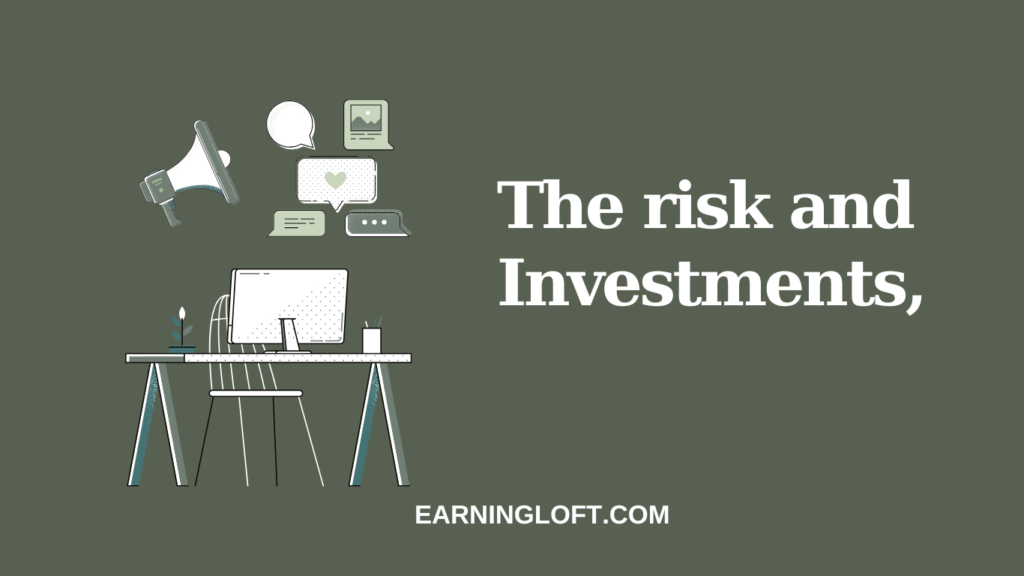Investing: Where and How to Do It
What Constitutes an Investment?
An investment is the allocation of resources, such as time, money, or effort, with the expectation of generating a return or benefit in the future. Whether it’s purchasing stocks, real estate, bonds, or even investing in personal education, the fundamental goal is to create value over time. Investments play a crucial role in economic growth, individual financial stability, and wealth creation. Understanding what constitutes an investment requires recognizing its defining characteristics: commitment of resources, an element of risk, a time horizon, and the expectation of returns.
This concept transcends financial markets, extending to non-financial areas such as human capital development or sustainable practices that yield societal benefits. Whether traditional or alternative, investments are a cornerstone of planning for future gains, making them a critical component of both personal and broader economic strategies.
How to Make Investments

Making investments is an essential part of personal finance and wealth-building. Here’s a step-by-step guide to help you get started:
1. Understand the Basics of Investing
- What is Investing? It involves putting your money into financial instruments like stocks, bonds, real estate, or funds to grow its value over time.
- Why Invest? To achieve financial goals such as retirement, education, or wealth-building.
- Types of Investments:
- Stocks: Ownership in a company.
- Bonds: Loans to a company or government with interest returns.
- Mutual Funds: Pools of money managed by professionals.
- Real Estate: Property investments.
- Exchange-Traded Funds (ETFs): Similar to mutual funds but traded on stock exchanges.
- Cryptocurrency: Digital assets (high risk).
2. Set Financial Goals
Define clear objectives for your investments. Ask:
- What is the purpose of this investment? (e.g., retirement, buying a home)
- How much money do I need to achieve this goal?
- What is my investment timeline? (Short-term, medium-term, long-term)
3. Assess Your Risk Tolerance
- Risk Tolerance: How much risk you’re willing to take.
- High-risk: Potential for high returns but greater chance of loss (e.g., stocks, crypto).
- Low-risk: Safer but lower returns (e.g., bonds, fixed deposits).
- Younger investors typically have a higher risk tolerance.
4. Create a Budget
- Allocate a portion of your income for investments.
- Build an emergency fund first (3-6 months of expenses).
- Avoid investing money you might need in the short term.
5. Choose an Investment Platform
- Open an account with a brokerage or investment app.
- Popular platforms: Fidelity, Charles Schwab, Robinhood, e Toro, or local providers in your country.
- Research fees and features before choosing.
6. Diversify Your Portfolio
- What is Diversification? Spreading investments across different asset classes to reduce risk.
- Example: A mix of stocks, bonds, real estate, and ETFs.
- “Don’t put all your eggs in one basket.”
7. Start Investing
- Dollar-Cost Averaging (DCA): Invest a fixed amount regularly, regardless of market conditions.
- Lump-Sum Investing: Invest a large amount at once (riskier but potentially higher returns).
8. Monitor Your Investments
- Track performance regularly, but avoid overreacting to daily fluctuations.
- Rebalance your portfolio periodically to maintain your target allocation.
9. Be Patient and Consistent
- Investing is a long-term process.
- Avoid making emotional decisions during market highs or lows.
- Stick to your strategy.
10. Learn and Seek Professional Advice
- Educate yourself about markets and financial principles.
- Consider consulting a financial advisor for tailored advice.
By following these steps, you can make informed decisions and steadily grow your investments over time.
The risk and Investments,

Risk and Investments are two interconnected concepts that play a critical role in personal finance and wealth management. Here’s a breakdown of what you need to understand:
1. What is Risk in Investments?
Risk refers to the potential of losing some or all of your invested money or not achieving your expected returns. Every investment carries some degree of risk, but the type and level of risk vary.
Types of Investment Risks:
- Market Risk: Losses due to market fluctuations (e.g., stock prices falling).
- Credit Risk: The risk that a borrower (e.g., a company issuing bonds) may default on repayments.
- Liquidity Risk: Difficulty in selling an investment quickly without a significant loss in value.
- Inflation Risk: The risk that the return on investment will not keep up with the rate of inflation.
- Interest Rate Risk: Changes in interest rates can affect the value of bonds and other fixed-income investments.
- Currency Risk: For international investments, fluctuations in currency exchange rates can lead to losses.
2. Risk-Return Relationship
- High Risk = Potential for High Return: Investments like stocks or cryptocurrencies offer high returns but come with greater volatility and risk.
- Low Risk = Stable but Lower Returns: Bonds, treasury bills, or savings accounts are safer but yield lower returns.
The balance between risk and return depends on your investment goals, timeline, and tolerance for losses.
3. Assessing Your Risk Tolerance
To determine your comfort level with risk:
- Ask yourself how much loss you can bear without jeopardizing your financial security.
- Evaluate your investment horizon (longer timelines generally allow for higher risk investments).
- Consider personal factors like age, income stability, and financial responsibilities.
4. How to Manage Investment Risk
- Diversification: Spread your investments across different asset classes (stocks, bonds, real estate, etc.) to reduce exposure to any single risk.
- Asset Allocation: Allocate your investments based on your risk tolerance and financial goals (e.g., 60% stocks, 30% bonds, 10% cash).
- Research and Analysis: Understand the risks of any investment before committing money.
- Stop-Loss Orders: Use tools to automatically sell investments if they fall below a certain price.
- Risk Hedging: Use instruments like options or invest in uncorrelated assets.
5. Risk Levels by Investment Types
| Investment Type | Risk Level | Potential Return |
| Savings Accounts | Low | Very Low |
| Government Bonds | Low | Low |
| Corporate Bonds | Medium | Moderate |
| Real Estate | Medium | Moderate to High |
| Stocks | High | High |
| Cryptocurrencies | Very High | Very High |
6. Why Risk is Necessary
- Risk is essential for growth. Low-risk options may preserve capital but might not outpace inflation.
- By taking calculated risks, you can achieve significant financial milestones like wealth accumulation, retirement savings, or funding education.
7. Balancing Risk and Returns
- Young Investors: Can afford higher risks because they have time to recover losses.
- Retirees: Should minimize risks as they rely on investments for income.
- Revisit and adjust your portfolio periodically to ensure it aligns with your current risk tolerance.
8. Seek Professional Guidance
If you are unsure about managing risk, consult a financial advisor who can design a personalized strategy based on your goals.
Understanding and managing risk is a cornerstone of successful investing. The key is to find a balance that aligns with your financial aspirations and comfort level.
Return on Investment (ROI) calculation

1. Formula for ROI
ROI=(Net ProfitCost of Investment)×100\text{ROI} = \left( \frac{\text{Net Profit}}{\text{Cost of Investment}} \right) \times 100ROI=(Cost of InvestmentNet Profit)×100
- Net Profit = Total Returns – Cost of Investment.
- Cost of Investment = The initial amount spent on the investment.
2. Example Calculation
Scenario:
You invest $1,000 in stocks. After one year, you sell the stocks for $1,200.
Steps:
- Calculate the Net Profit:
Net Profit=Total Returns−Cost of Investment=1,200−1,000=200\text{Net Profit} = \text{Total Returns} – \text{Cost of Investment} = 1,200 – 1,000 = 200Net Profit=Total Returns−Cost of Investment=1,200−1,000=200
- Apply the ROI Formula:
ROI=(2001,000)×100=20%\text{ROI} = \left( \frac{200}{1,000} \right) \times 100 = 20\%ROI=(1,000200)×100=20%
So, the ROI is 20%.
3. Interpretation of ROI
- A positive ROI indicates that the investment was profitable.
- A negative ROI means the investment resulted in a loss.
- A higher ROI is generally better, but it must be evaluated in the context of risks and time taken to achieve returns.
4. ROI for Multi-Period Investments
If an investment spans multiple periods, you can calculate Annualized ROI to compare it fairly with other investments.
Formula for Annualized ROI:
Annualized ROI=(Final ValueInitial Value)1Years−1\text{Annualized ROI} = \left( \frac{\text{Final Value}}{\text{Initial Value}} \right)^{\frac{1}{\text{Years}}} – 1Annualized ROI=(Initial Value Final Value)Years1−1
5. Limitations of ROI
- Does not consider time: A 10% ROI over 1 year is more attractive than 10% over 5 years, but basic ROI does not account for this.
- Ignores risk: It doesn’t show the level of risk taken to achieve the return.
- Doesn’t include inflation or opportunity cost.
6. Enhanced ROI Metrics
To overcome its limitations, consider:
- Return on Assets (ROA): Evaluates how efficiently assets are used.
- Return on Equity (ROE): Measures profitability relative to shareholders’ equity.
- Net Present Value (NPV): Considers the time value of money.
By using ROI, you can quickly assess the performance of investments and make informed financial
FAQ
How Separates Speculation From Investment?
Speculation and investment differ primarily in their goals, time horizons, and levels of risk. Investment focuses on the long-term growth or income potential of assets, often based on thorough analysis and sound fundamentals. Investors typically aim for steady returns over time, minimizing risks. Speculation, on the other hand, involves higher risk and often seeks short-term profits from market fluctuations or price changes. Speculators rely more on market trends and sentiment, rather than the intrinsic value of the asset. While investment builds wealth gradually, speculation carries the potential for both high gains and significant losses.
What Makes Savings Different from Investing?
Savings and investing differ in purpose, risk, and accessibility. Savings typically involve setting aside money in secure, low-risk accounts, such as savings accounts or fixed deposits, to preserve capital and provide quick access for emergencies or short-term needs. It prioritizes safety over growth, often yielding modest interest. Investing, however, involves committing money to assets like stocks, bonds, or real estate with the goal of growing wealth over time. Investments carry higher risks but offer the potential for greater returns, often requiring a longer time horizon and less immediate accessibility compared to savings.
An investment bank: what is it?
An investment bank is a financial institution that specializes in providing services to businesses, governments, and institutional clients rather than individual consumers. Its primary roles include raising capital by issuing stocks or bonds, advising on mergers and acquisitions, and offering strategic financial guidance. Investment banks also facilitate trading of securities, manage investment portfolios, and provide research insights to clients. Unlike retail banks, they focus on large-scale financial transactions and complex financial instruments, playing a critical role in global markets and corporate finance.









Leave feedback about this